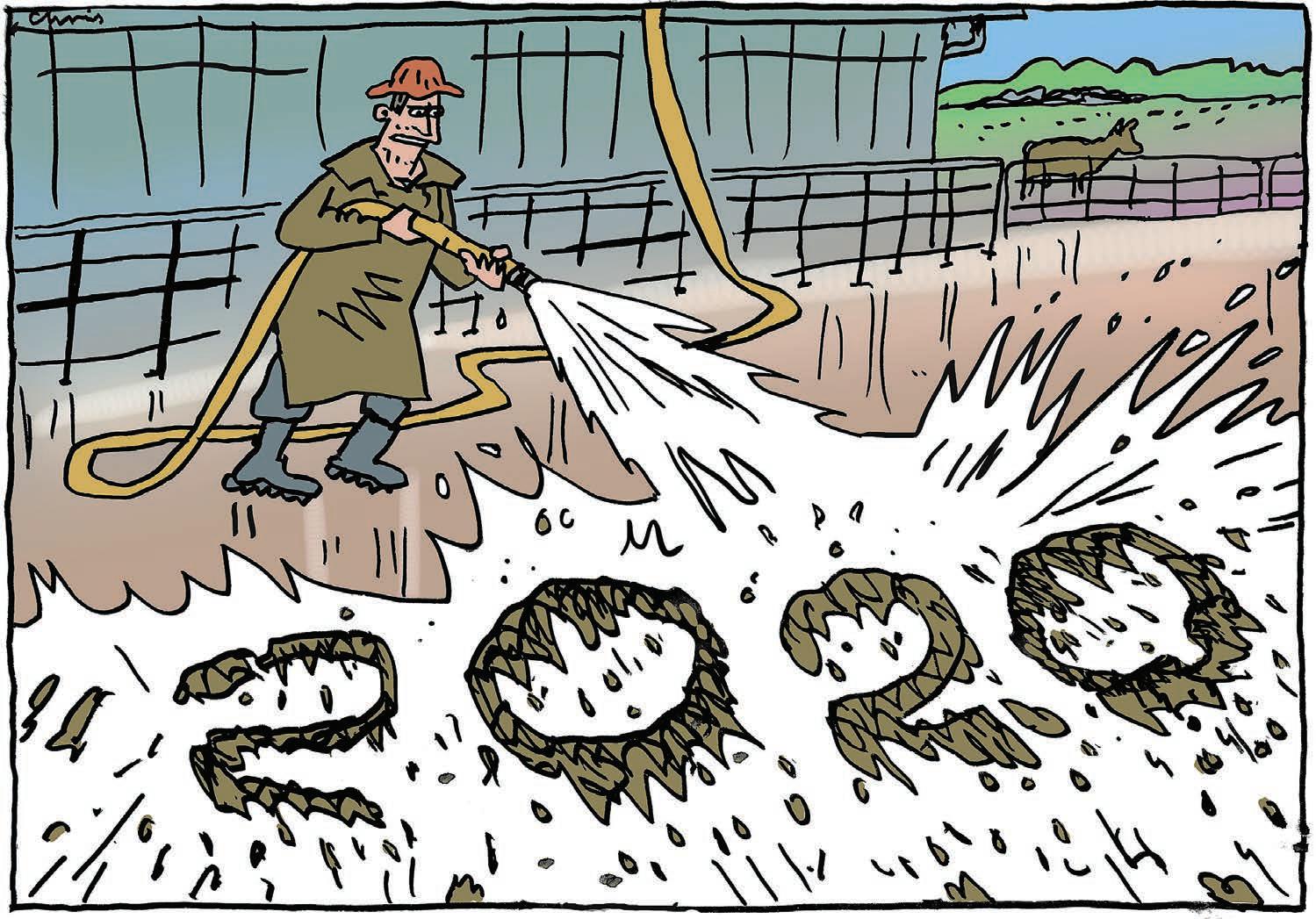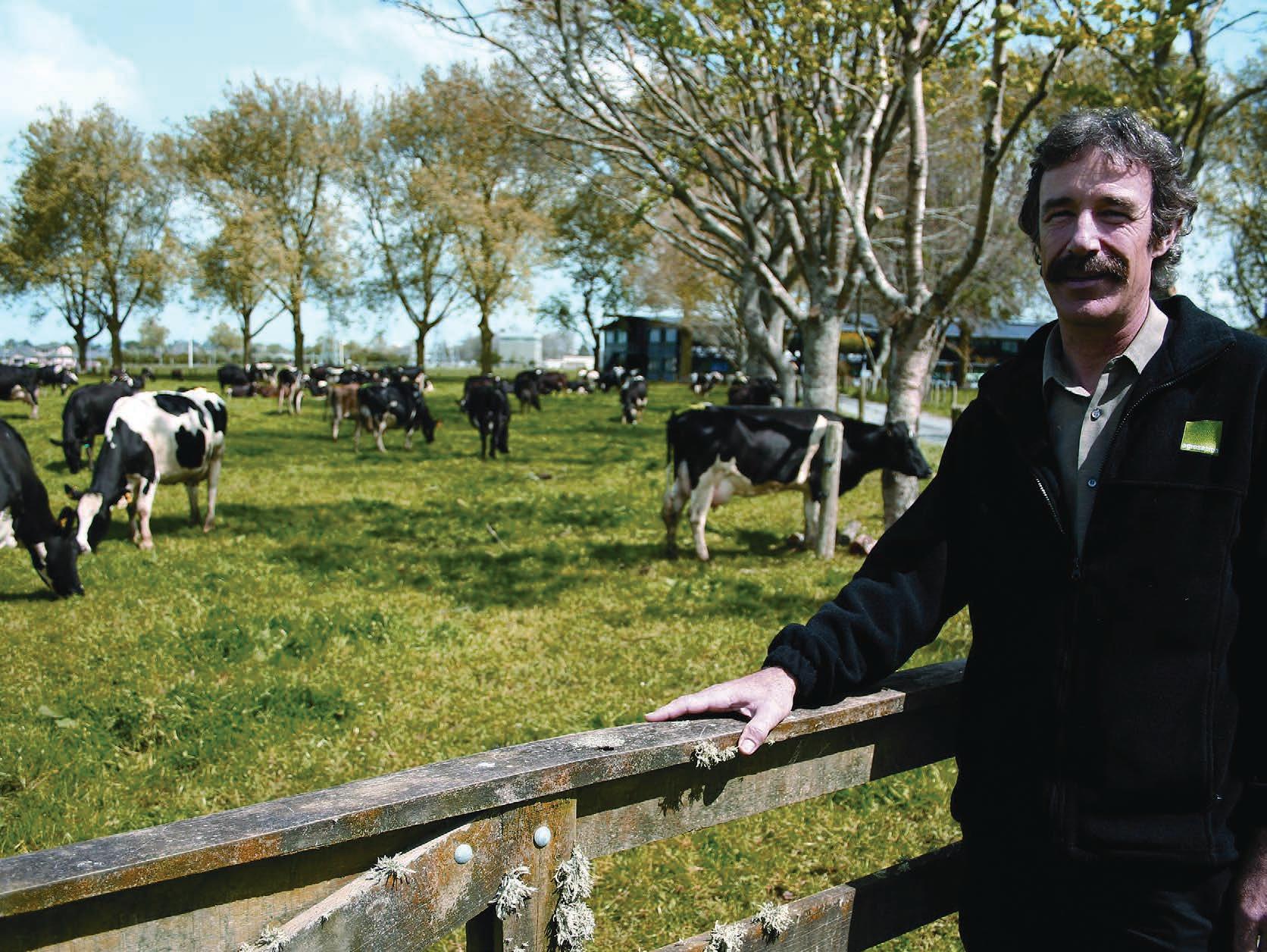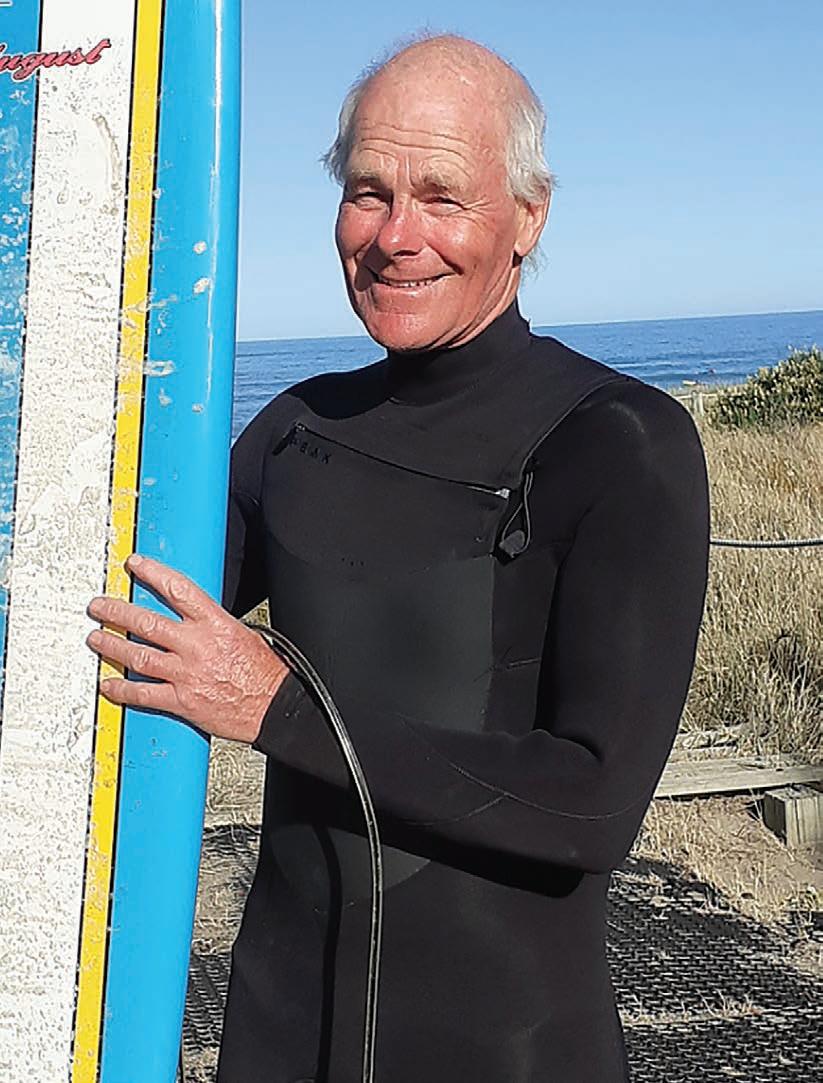
5 minute read
New Thinking
Kiwi research, tech – a year in review
Despite lockdown and pandemic challenges of 2020, New Zealand’s primary sector continued to innovate and explore technology and science that promises to improve returns and opportunities for farmers and the country. Farmers Weekly’s New Thinking section has identified some of the research and technology that stood out in the past 12 months. Richard Rennie reports.
WAIKATO-based company Halter laid out a new farming canvas in 2020, with technology enabling farmers using its remote-controlled collars on their cows to do away with not only fences, but the ritualistic trip to bring the herd in for milking twice a day.
The GPS collar and software system took three years to develop, aided by an inventive Silicon Valley funding pitch made by founder, Morrinsville-born Craig Piggott.
After its low-key commercial launch late in 2020, Halter is experiencing healthy numbers of farmers wanting to put their cows online with the collars that pin down cows’ grazing area and location.
Most recent updates now mean the collars now also incorporate heat detection and general health alerts into the app.
The collars contain patented algorithmic technology that enables farmers to train their cows to respond to collar alerts, consisting of sound and vibration.
Cows can be trained to exit the paddock for milking and to remain within a break even in the absence of an electric fence in front of them.
Business development manager Steve Crowhurst says the recent addition of an automated alert that activates at the same time every day will have cows heading to the dairy while their owners either get a lie in, or gain valuable extra time in the afternoon to tend to farm, family or outside interests.
“And we have one client farmer who has merged a bunch of paddocks by removing fences to increase paddock size to five hectares for his 300 cows,” Crowhurst said.
While farmers nervously eye drying pastures throughout Northland, Waikato and Bay of Plenty, scientists at AgResearch are using stressors like drought to help develop livestock and feed more resilient to climate stressors.
In 2020 work in the little-known field of methylomes had scientists studying how DNA can be modified in living creatures and plants during development and during a sustained stressful event such as drought.
Related but higher profile work in the human field has been led by renowned scientist Sir Peter Gluckman.
He and colleagues have studied epigenetics and how a mother’s lifestyle and environment can impact upon her child’s future
healthy development.
Similarly, methylome research looks to see how DNA modified by a stressful event may be passed on two or three generations after the event.
With climate change impact hitting more intensely and frequently, the work has urgency for NZ farmers wanting to work within the “new normal” of volatile and extreme conditions.
Head researcher Dr Shannon Clarke says the AgResearch team has benefitted by having a vast library of genetic material built up over two generations of NZbased research. The material can be assayed at a molecular level to determine what species variations have resulted from environmental change over this time.
Heat tolerance, drought resistance and facial eczema (FE) are all environmentally related traits or conditions researchers are looking closely at.
Researchers say it may be five to 10 years before commercial genetics are available, and will most likely be driven by those exhibiting the greatest longevity, borne by variations passed on that enable that particular specimen greater tolerance of extremes.
The “big find” of 2020 for researchers proved to be a massive freshwater reservoir discovered lying 20 metres below the seafloor, off the Canterbury coast.
NIWA researcher Joshu Mountjoy says undersea freshwater aquifers are relatively poorly understood in NZ, and the scale of this one surprised researchers.
Wellington sources much of its drinking water from one, but the Canterbury find is huge and estimated to be half Canterbury’s known groundwater volume, or 2000 cubic kilometres.
With Canterbury groundwater replenished from the Alps, losses in snow levels due to climate change have been worrying hydrographers for some years.
PASSED DOWN: AgResearch’s Dr Shannon Clarke is part of team researching how stress events modify DNA. The research has implications for climate change adaptation. BLANK CANVAS: Halter’s business development manager Steve Crowhurst says 2021’s order book is starting to fill as farmers accept virtual fencing technology.

Mountjoy says the uncommonly large seaward reserve could provide a valuable resource in future, but will require major shifts in technology in order to be extracted.
He says there may also be prospects of other such reserves as far north as Hawke’s Bay, and interest in such reserves is growing overseas where water supplies are dwindling in countries like India.
The same conditions driving AgResearch’s methylome researchers are also creating a less forgiving workplace for farmers.
Alongside Australia, NZ has one of the highest rates of melanoma cancer in the world per capita with the disease close to the road toll, killing about 400 people a year.
Kiwi farmers lead the population with rural males at a rate of 7.7 per 100,000, compared to 6.4 per 100,000 in urban areas.
The twin perils of sun and distance to doctors mean these sometimes life-threatening lesions go unchecked and a new diagnostic tool aimed at farmers gives farmers greater opportunity to save their lives sooner.
Skin cancer diagnosis company MoleMap was prompted last year to head to market sooner than expected with its remote diagnostic service after lockdown caused physical consults to dry up.
The beta version had healthy uptake from patients, 250 using it in the first two weeks and of the 250, 280 lesions were detected with 100 requiring further consultation.
Of this, 12% of the patients checked were identified as having “high risk” lesions.
Because melanoma spreads quickly into the bloodstream from a skin lesion, early detection is invaluable and very successful at preventing it spreading further.
Statistics show a 94% five-year survival rate for those with less than 1mm lesion thickness at detection time.
Using smart phone consultations to show professionals any problem moles, clinic nurses can quickly triage what lesions need urgent attention.








